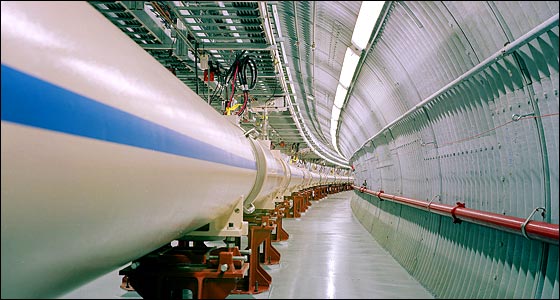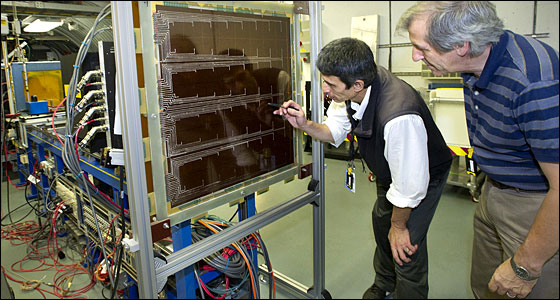BNL Timeline
APS Historic Site Home > BNL Timeline > 2002-now
2002-now

The Relativistic Heavy Ion Collider is really two accelerators in one — made of crisscrossing rings of superconducting magnets, enclosed in a tunnel 2.4 miles in circumference. In the two rings, beams of heavy ions are accelerated to nearly the speed of light in opposite directions, held in their orbits by powerful magnetic fields.
The Relativistic Heavy Ion Collider (RHIC) starts running and after years of data analysis, reveals a new state of matter called quark-gluon plasma. Surprisingly, instead of behaving like a gas, as scientists had predicted, this matter appears to be more like a liquid, a “perfect” liquid with virtually no viscosity. Powered by the same initial particle injection line that feeds RHIC, the NASA Space Radiation Laboratory startup gives a boost to scientists studying the effects of simulated space radiation on biological and physical systems.
After collecting data from more than 1 billion decay events in Brookhaven’s muon g-2 experiment, physicists announce a possible violation of the Standard Model.
Across the ocean, Brookhaven physicists and engineers play a major role in the startup of the world’s most powerful particle smasher, the Large Hadron Collider at CERN. In Canada, Brookhaven scientists take part in the Sudbury Neutrino Observatory experiment, which shows that electron neutrinos change type.

The NASA Space Radiation Laboratory, where scientists study the possible biological risks to human beings exposed to space radiation
Visiting scientists take home two Nobel Prizes in Chemistry for work conducted, in part, at the National Synchrotron Light Source. The 2003 prize was given for work that explains how a class of proteins called ion channels help generate nerve impulses, and the 2009 prize recognized research that illuminates the structure and function of the ribosome, a cellular complex responsible for producing the thousands of proteins that are required for living cells. Now under construction at Brookhaven, the National Synchrotron Light Source II will produce x-rays 10,000 times brighter than NSLS, enabling researchers to tackle some of the nation’s most important scientific challenges.